
Plant
12:11, 05-Apr-2019
Four popular mourning flowers during Qingming Festival
By Ding Qian
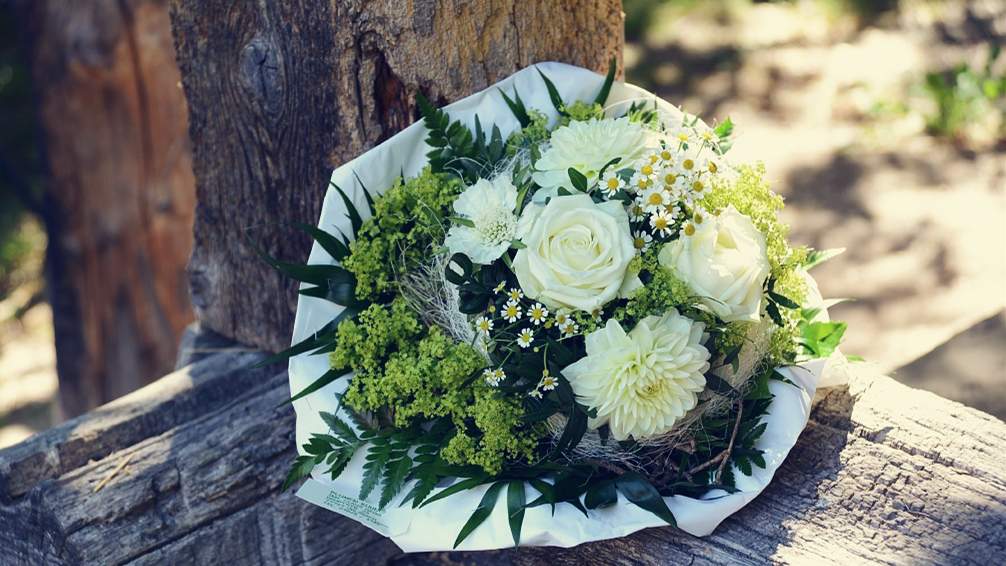
As I walked into the flower market near Beijing's Fifth Ring Road, it was difficult not to notice the bouquets of white flowers everywhere in this bustling underground space.
People, alone or with company, made their way among the pots and vases scattered on the floor, searching for a floral arrangement to their liking. They're neither looking to decorate their living room, nor are they preparing a sweet surprise – this time, the flowers are for the dead.
Friday marks Tomb-Sweeping Day, or Qingming Festival, in China – a day to remember the loved ones who has passed away.
People mark the occasion by burning joss paper and visiting the graves of deceased family members and friends with flowers at hand to pay tribute to them.
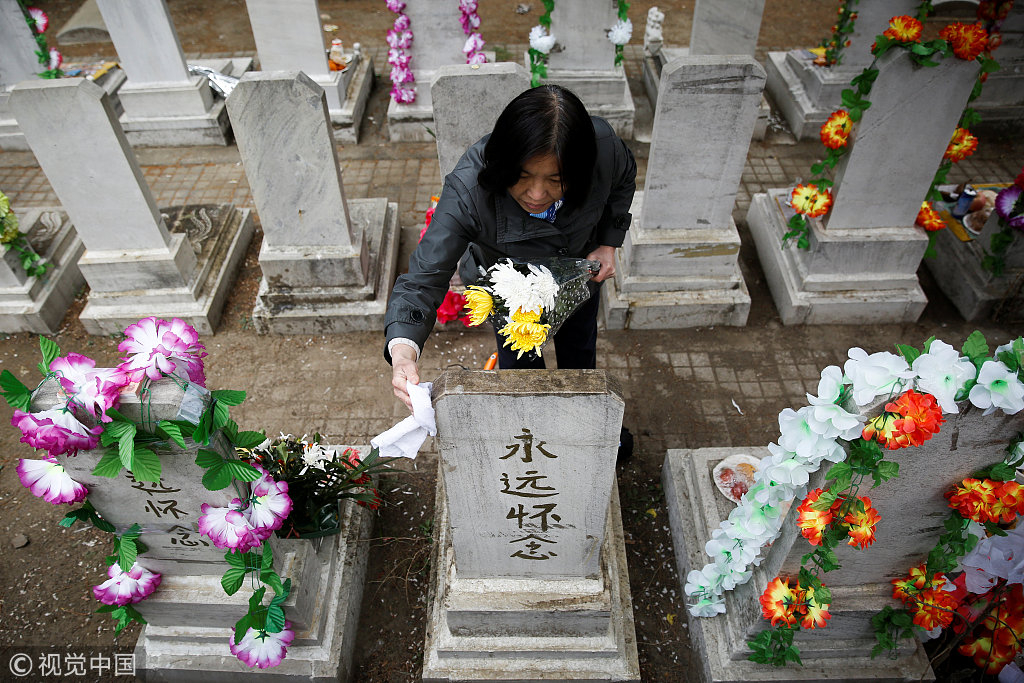
A woman cleans a gravestone at Babaoshan Cemetery ahead of Qingming Festival, or Tomb-Sweeping Day, in Beijing, April 4, 2018. /VCG Photo
A woman cleans a gravestone at Babaoshan Cemetery ahead of Qingming Festival, or Tomb-Sweeping Day, in Beijing, April 4, 2018. /VCG Photo
The bouquets are delicate and beautiful. White roses, yellow and white chrysanthemums, and white calla lilies, together with forget-me-nots and some light-colored carnations make for a beautiful token of appreciation for those who left this world without really leaving us.
Soon they will take their place around tombstones as a symbol of love.
Here's a look at some funeral flowers in China:
Chrysanthemum
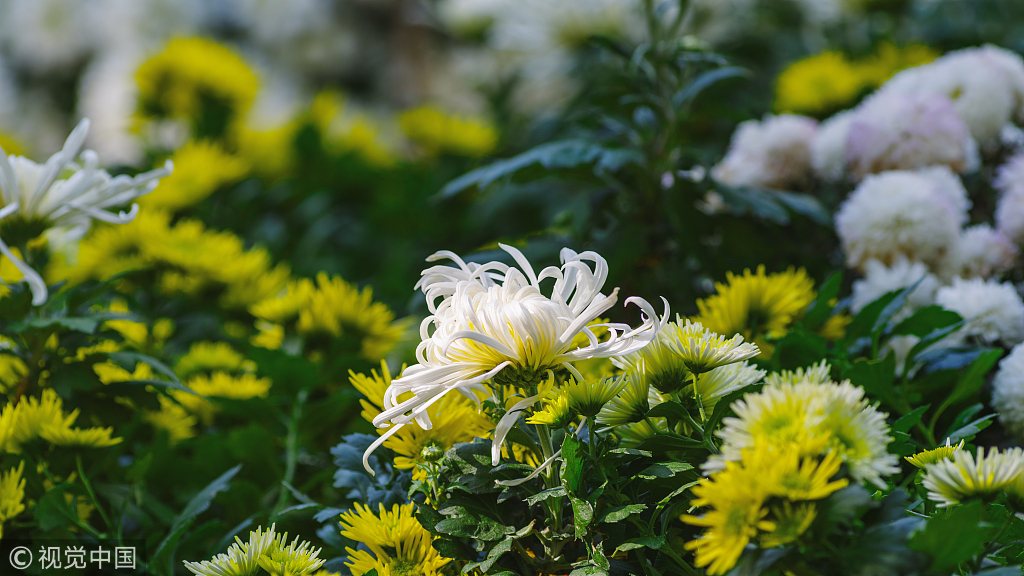
Yellow and white Chrysanthemums. /VCG Photo
Yellow and white Chrysanthemums. /VCG Photo
Chrysanthemum has been cultivated in China for thousands of years, and has inspired literary people throughout the country's history. Chinese poet Tao Yuanming (355-417) was fond of the flower, writing "I pick fence-side chrysanthemums at will, and leisurely I see the southern hill."
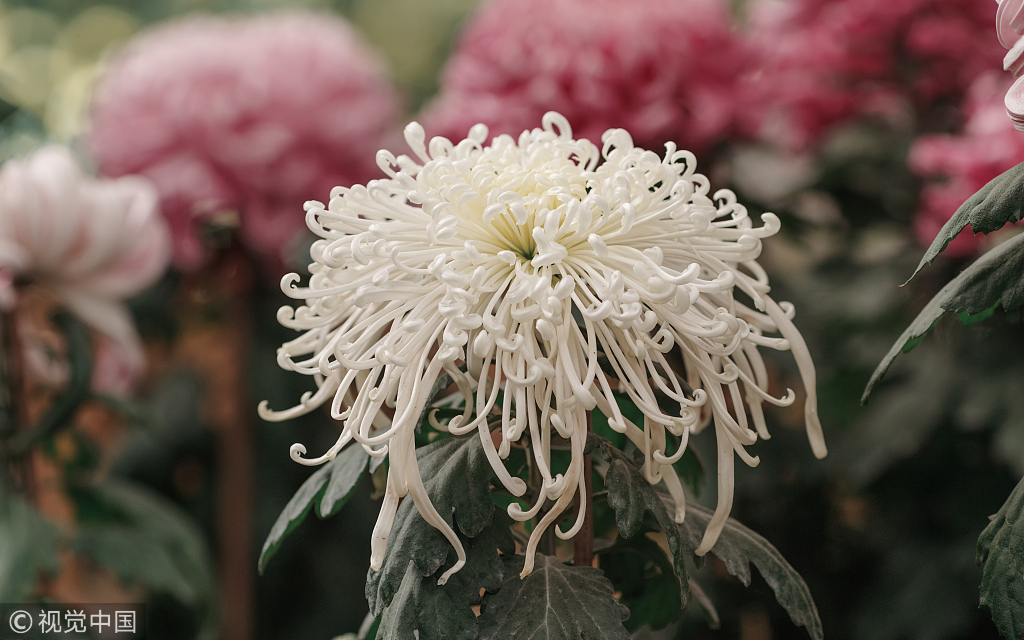
A white Chrysanthemum. /VCG Photo
A white Chrysanthemum. /VCG Photo
White and yellow chrysanthemums symbolize grief in Chinese culture. They are also boiled to make tea in some parts of Asia.
The flower likes warm and humid weather, but can tolerate cold weather as well.
Calla lily
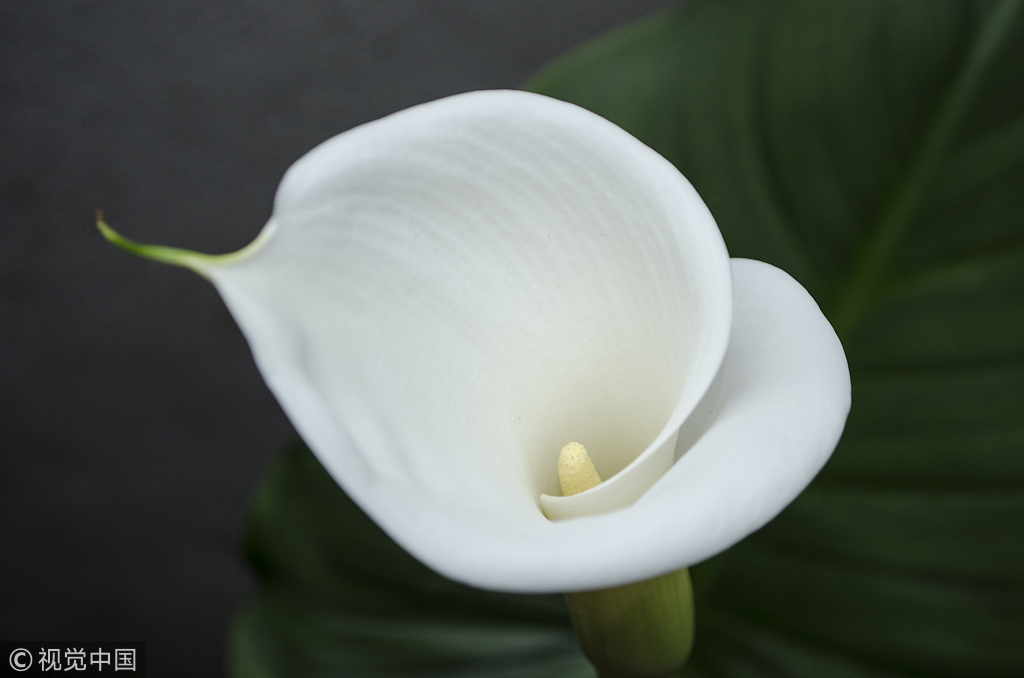
A white calla lily. /VCG Photo
A white calla lily. /VCG Photo
White calla lilies are widely used to convey condolences in China, though the flower is native to southern Africa. The plant can grow to 0.6–1 meters in height, with large clumps of arrow shaped leaves. The pure white spathe produces a faint, sweet fragrance.
Who can resist such beauty? But be careful, the ingestion of the raw plant could cause a severe burning sensation and stomach pain.
Lily
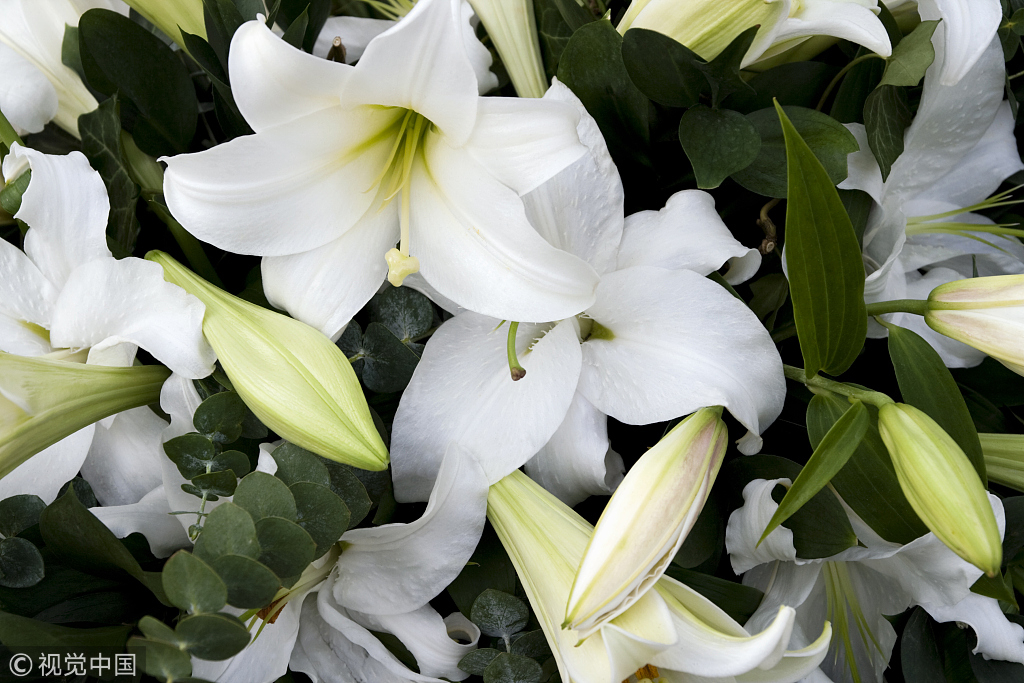
A bouquet of white lilies. /VCG Photo
A bouquet of white lilies. /VCG Photo
Like calla lilies, white lilies are also commonly used as a symbol of mourning in the country. Most species are native to the temperate northern hemisphere. The herbaceous plant has large prominent flowers.
The non-bitter bulbs of lilies are cultivated on a large-scale in China as healthy food. The dried bulbs are often used in soups and other dishes.
Gardenia
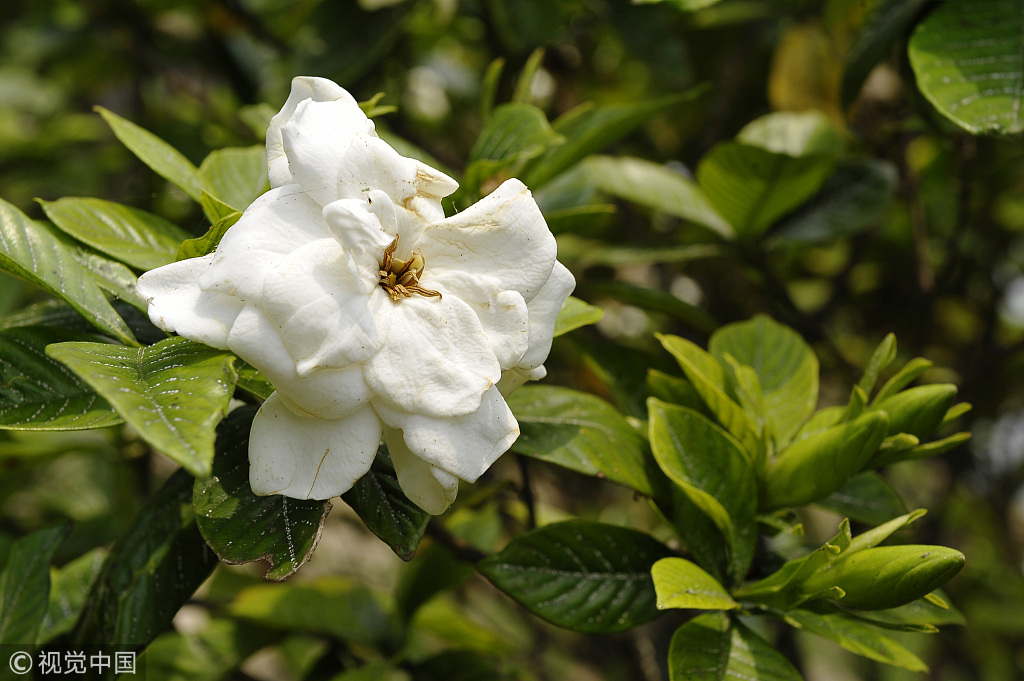
Gardenia. /VCG Photo
Gardenia. /VCG Photo
Gardenia plants are a fixture on many people's balconies around the world. Native to the tropical and subtropical regions of Asia, Africa and Pacific Islands, the evergreen shrub can grow to 1-1.5 meters tall.
Gardenia is an easy-to-grow plant. Its flowering period is from mid-spring to mid-summer. It's sometimes used as a mourning flower in China because of its elegant appearance.
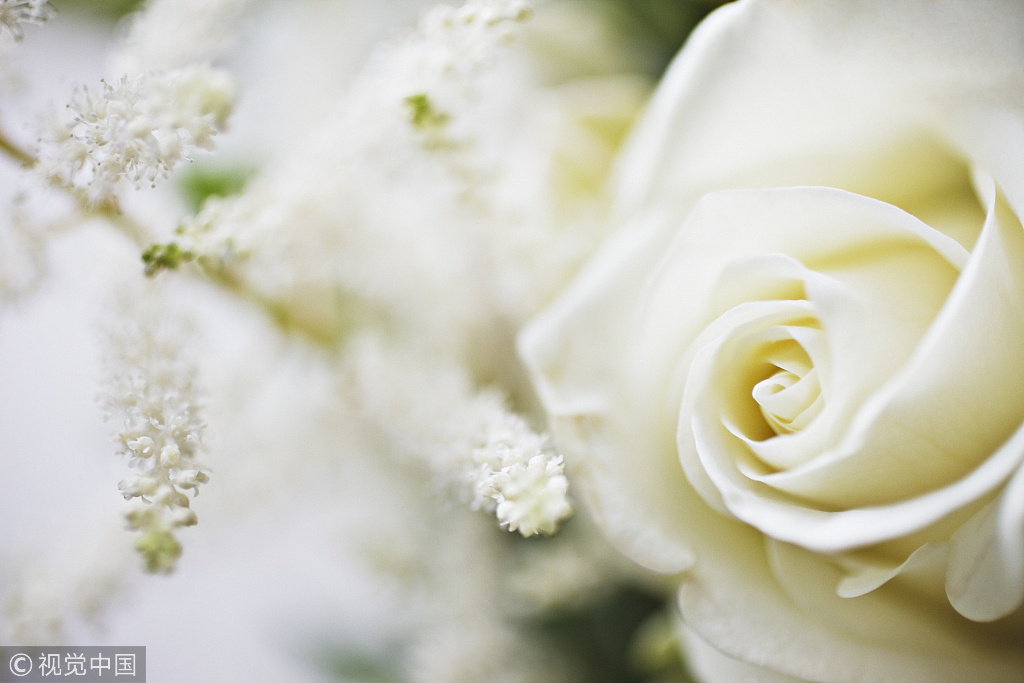
A white rose. /VCG Photo
A white rose. /VCG Photo
Other than the above-mentioned flowers, white roses and forget-me-nots are also commonly used to express love and grief in the country.
But it's an individual choice. No matter it's a red rose, pink peony or yellow sunflower, love is color blind. Keeping the memory of our beloved ones is the best tribute one can offer.
(Cover image via VCG)
(If you want to contribute and have specific expertise, please contact us at nature@cgtn.com.)

SITEMAP
Copyright © 2018 CGTN. Beijing ICP prepared NO.16065310-3
Copyright © 2018 CGTN. Beijing ICP prepared NO.16065310-3